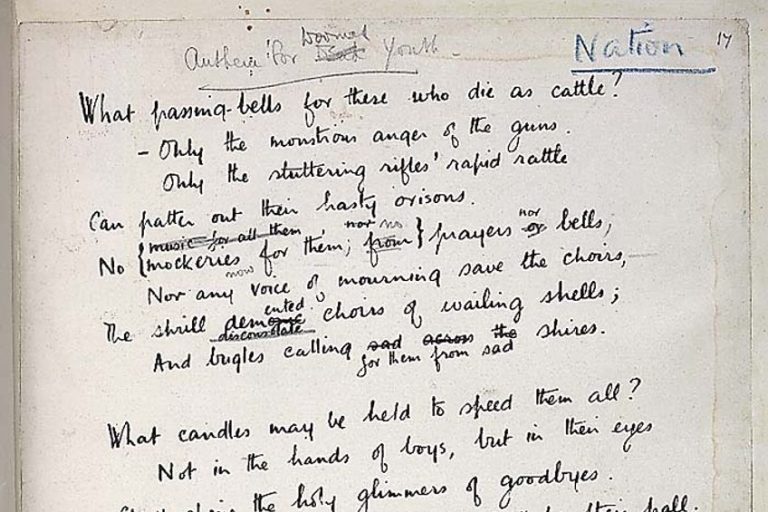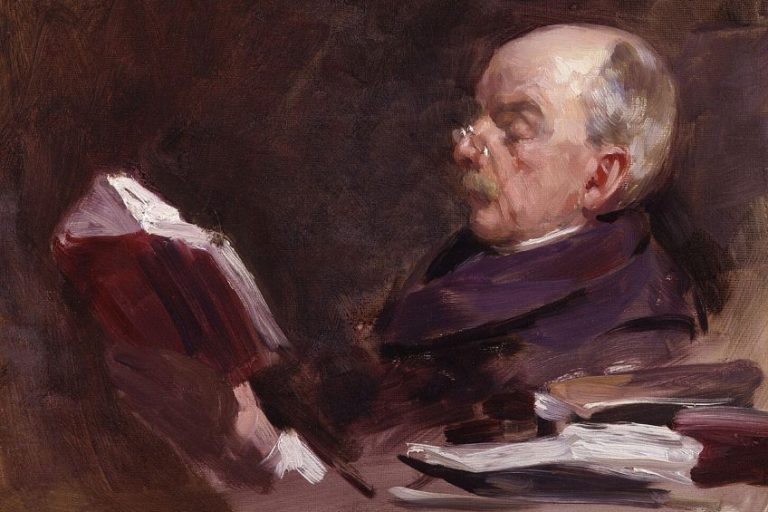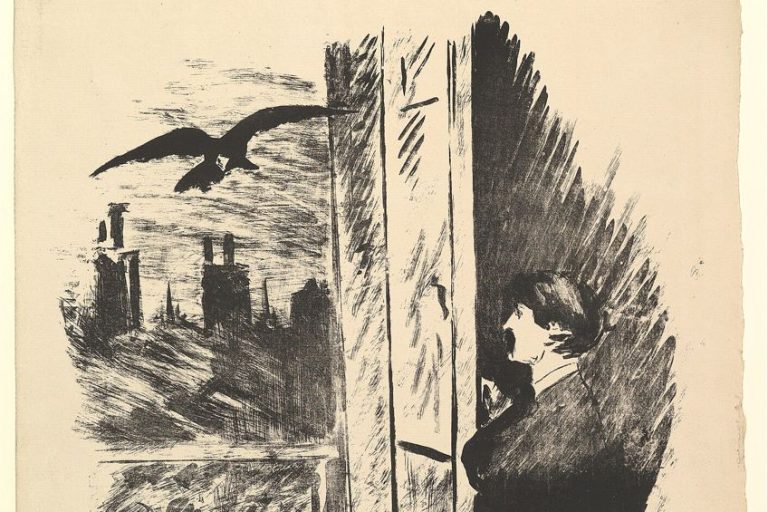Rhythm in Poetry – The Overlap Between Music and Poetry
To have rhythm is to have flow, and while some of these concepts and ideas can be rather nebulous, they will be our focus for this discussion today. This article will examine rhythm in poetry by investigating some of the different types of rhythm, the differences between rhythm and meter, how to find rhythm in a poem, and a few examples of rhythm in poetry. If you want to learn more about rhythm in poetry and how it can be found, you have come to the right place!
Table of Contents
A Look at Rhythm in Poetry
When it comes to poetry, it is very important to understand rhythm. This concept refers to the beat, flow, or tempo of a poem as a whole. It is also a generalized term. It combines aspects such as meter and rhyme, although our primary focus will be on the more metrical side today. Despite this, we should keep in mind that rhyme is found in all instances of poetry. It may be unusually formed in something like a free verse poem, but rhythm still ultimately exists there. However, before we move on to a discussion of rhyme in poetry, let’s have a quick look at a summary of rhythm in poetry.
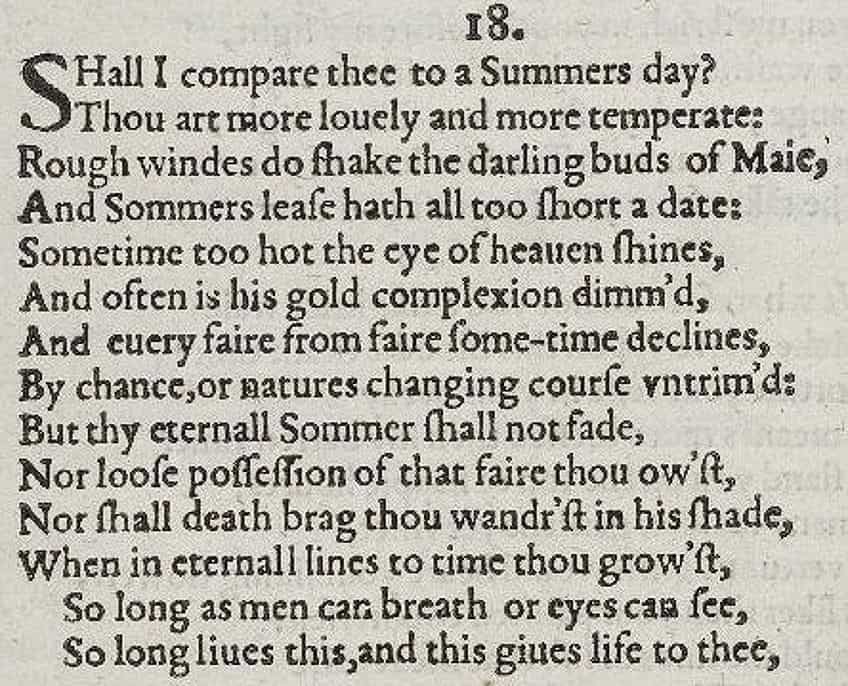
Summary of Rhythm in Poetry
While it would be beneficial to read this entire article if you wish to understand rhythm in poetry, not everyone has the time. So, for those who don’t want to read this whole thing, here’s a quick overview and summary of the main point.
- Rhythm in poetry is the flow of the poem. When it comes to the definition of rhythm in poetry, it essentially entails the use of the general tempo of the poem as a whole. This incorporates various elements.
- Meter is a common element of rhythm. One of the easiest ways to discover the rhythm in a poem is to examine its use of metrical structures. These structures have to do with the arrangement of syllables in a poem according to whether they are stressed and unstressed.
- Rhyme and repetition are commonly used in rhythm. While meter is generally the most commonly understood element of rhythm in poetry, the use of rhyme schemes and general repetition can heavily contribute to the flow of a poem.
This has been our brief summary of rhythm in poetry, but if you are interested in learning a lot more about this concept in general, it could be best to keep reading.
Now that we have summarized things, we can resume our examination of rhythm in poetry.
Types of Rhythm in Poetry
While rhyme and repetition do form part of rhythm in poetry, the most common way to determine it is to find the meter of a poem. This entails the use of syllables in a poem, and whether they are stressed and unstressed in their specific arrangement. There are several ways they can be arranged. These include:
- Iambic structures: This kind of meter involves the use of two syllables. They are arranged according to an unstressed and then stressed structure.
- Trochaic structures: This kind of meter involves the use of two syllables. They are arranged according to a stressed and then unstressed structure.
- Spondaic structures: This kind of meter involves the use of two syllables. They are arranged as two stressed syllables in a row.
- Dactylic structures: This kind of meter involves the use of three syllables. They are arranged as a stressed syllable followed by two that are not stressed.

This has only been a brief overview of four of the different kinds of metrical structures that can be used as part of the rhythm in poetry. There are various other metrical structures and other types of rhythm, but this is a general overview of some of the most common of those types.
How to Find Rhythm in a Poem
Learning to identify rhythm in poetry can be a rather difficult thing at first, but it becomes a lot easier the more you do it. So, like with many things in life, that annoying old mantra should be adopted: practice makes perfect. However, when I used to teach rhythm in poetry to my students, I would show them the ways that you can find aspects of rhythm in each of the poems, and it can involve using a pen to scribble on a page a bit. So, it would be best to have a blank copy of a poem so that you can scribble all over it. Although, I would encourage this for all instances of poetic analysis as it helps a lot to write all over the place!
So, how do we find rhythm in poetry? We start with our blank poem and start by counting the syllables. This helps a lot as you can determine the metrical structure through this method. The number of syllables per line can aid in determining the poem’s use of rhythm. Does it use the same number of syllables per line or does it vary it up? This is something that you need to determine on an individual basis.
Once you have done this, you will need to determine the stressed and unstressed syllables in each of the lines.
This can take a lot of practice, but the stress of a syllable has to do with how it is emphasized, and different words emphasize different syllables. So, it tends to be highly individualized to each word. So, if you are struggling to identify which words have which kind of stress, it can help to look them up. Many dictionaries will tell you where the stress lies. However, different ways of pronouncing words can lead to different stressed and unstressed syllables. The length of the syllable can often indicate that it is stressed. The longer, the more likely it is to be stressed. This does take practice though.
Once you have determined the stress of the different words, you can determine what kind of metrical structure it uses. The different metrical structures are discussed above. However, once this is out of the way, you can look towards other elements, such as the use of repetition and rhyme in the poem. These contribute to the general rhythm of the poem. We often mark rhyme with letters so that we can see which lines rhyme with which.
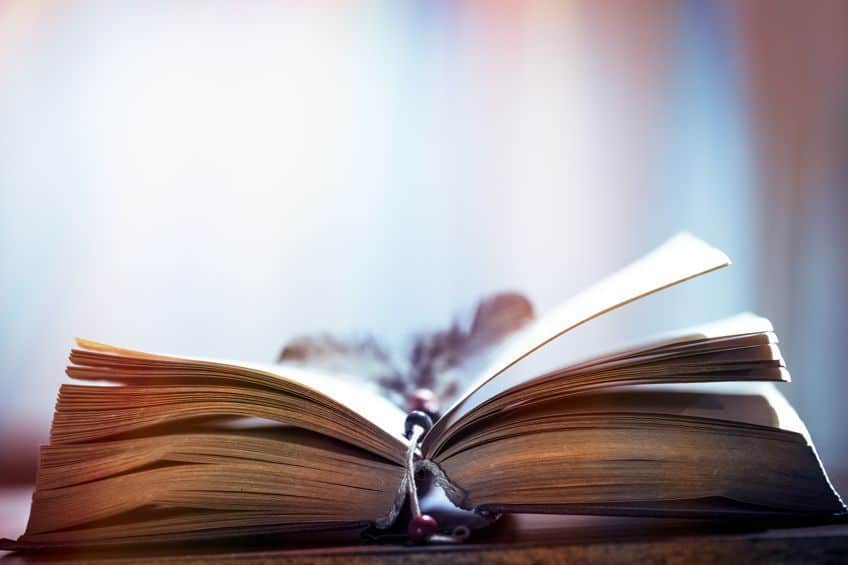
All of these aspects come together to make up the rhythm of the poem. So, once all of that has been determined, you now need to ask yourself why the poem uses this particular sense of rhythm. It’s up to you to figure this out on an individual level based on every different poem. However, this is how to find rhythm in a poem. Hopefully, it has been a good overview of the kind of process you can use to help you find rhythm in poetry.
Examples of Rhythm in Poetry
Rhythm can be found all over the place, and while some may argue that a poem could have no rhythm, it may be more accurate to say that it has a highly irregular rhythm. For this reason, it can be hard to identify what does not constitute “rhythm poetry”, and that is why we are going to have a quick look at three different examples of rhythm in poetry.
We shall see and understand how varied rhythm can be.
The Raven (1845) by Edgar Allan Poe
| Date Published | 1845 |
| Type of Poem | Narrative poem |
| Rhyme Scheme | ABCBBB |
| Meter | Trochaic octameter |
| Topic | Grief and loss |
The Raven is a poem that is generally noted for its highly rhythmic structure. The poem makes use of a variety of techniques to reinforce a more musical quality that leads it to roll off the tongue in a way that is simply appealing to listen to. One does not even need to necessarily understand the whole poem to enjoy the basic act of listening to the way the words flow from one to the next. The poem itself, in terms of its message, is focused on the appearance of a raven in the home of a grieving man as it torments him repeatedly with a single word. And that word actually forms part of how this poem may be termed a perfect instance of “rhythm poetry”.
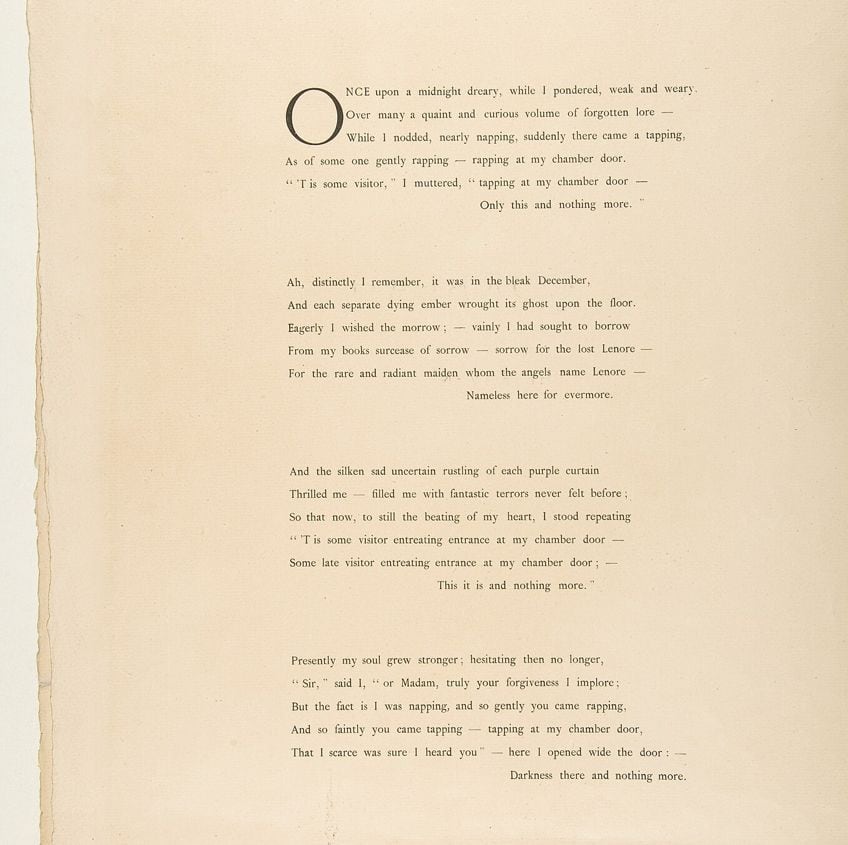
The poem uses repetition of words and structures throughout the poem, such as the use of the abovementioned bird’s use of a single word. That word is rhymed with a number of other words to be continually reinforced. In addition to those, the poem uses its metrical structures to continue the beat of the poem throughout, and this operates alongside The Raven’s use of end-rhyme alongside internal rhyme to lead to the creation of a constant and often overwhelming use of repetitious sounds.
All of these factors come together to produce the immense rhythm of this particular poem.
The Waste Land (1922) by T.S. Eliot
| Date Published | 1922 |
| Type of Poem | Modernist poem |
| Rhyme Scheme | None |
| Meter | None |
| Topic | Post-war disillusionment |
The Waste Land is a poem that is known for being highly complex and difficult to understand. The poem is generally regarded as one of the most important texts of 20th-century poetry and is seen as foundational in Modernism. The ideas within this long poem have to do with a general sense of disillusionment with European society following the First World War. It is a dark poem with many different sections that examine many different ideas. It is a poem that can require months to fully interpret, and even then, more interpretations can always come out of the woodwork.
So, how do you find the rhythm in poetry like this? Well, the use of rhythm in The Waste Land is a strange thing, because, unlike many other instances of more rhythmic poetry, this poem is more focused on a constant changing of rhythm. The use of meter and rhyme varies considerably from one section to another. It even switches from one language to another every now and then to further destabilize the whole poem of its own rhythm. This dedication to a constant undermining of the rhythm of the poem reinforces the messages that it is trying to express to us. It wants to be disjointed and difficult because it is trying to explore similarly disjointed and difficult feelings and ideas.
The rhythm in poetry can serve as far more than only an aspect of the musicality of said poem as it can also reinforce the themes on display.
Hormone Sonnet (2006) by Antjie Krog
| Date Published | 2006 |
| Type of Poem | Free verse |
| Rhyme Scheme | None |
| Meter | Variable |
| Topic | Female aging |
Hormone Sonnet is a poem that is not as well-known as the above poems, but it also makes use of a particular kind of natural poetic rhythm. This poem does not use a standard metrical structure or rhyme scheme and so the rhythm of the poem may not appear particularly prevalent. However, the reason that this is the case is because the poem mimics ordinary language. This is a great example of a poem in the free verse tradition. It does not have wildly variable structures like The Waste Land to force us to consider the ideas it is expressing, and it also does not include highly musical language like The Raven. Instead, it wants to sound like regular speech.
You read this poem as if you were reading prose. It does use poetic qualities, such as the constant repetition of questions and the use of a reference to Hamlet, but these aspects only serve to reinforce the everyday language element of the poem. It is difficult to misinterpret this poem in any way other than as an examination of aging from the perspective of a woman. We tend to associate rhythm in poetry with very specific and formal styles of rhythm, but any kind of flow in a poem can serve the poem in a number of different ways. In the case of this particular poem, it should have sounded like an everyday conversation, because it wants to express something that is universal.
Over the course of this article, we have examined various examples of rhythm in poetry in an attempt to understand rhythm. Poetry has always made use of rhythm, and the idea that a poem does not make use of any kind of rhythm can be seen as a bit of a misunderstanding of rhythm in general. That is why we discussed the different types of rhythm, how to find rhythm in a poem, and a number of examples of rhythm poetry in general. Hopefully, this has given you a good general overview of the concept, and perhaps it will help you to identify rhythm in poetry the next time you give one a read.
Frequently Asked Questions
What Is Rhythm in Poetry?
This is a term that is used to refer to the general beat, flow, or tempo of a poem. This is a very generalized term that incorporates several elements. For instance, meter and rhyme can both be aspects of the general rhythm in poetry. There are various types of rhythm in poetry, and each of these types have their own uses when it comes to their placement and implementation in poetry.
What Are the Different Types of Rhythm in Poetry?
There are many different types of rhythm in poetry. These generally entail the different types of metrical feet. This is the term used to describe the way stressed and unstressed syllables are used in a particular pattern throughout a poem. These include iambs, trochees, spondees, anapests, dactyls, and others. Each of these types of rhythm can be incorporated into poetry for a variety of reasons, and there is no definitive reason to use one or the other. Their purpose can often be individual to the poem in question.
Must a Poem Have Rhythm?
A poem does not need to have a formalized rhythm structure, but it may be incorrect to claim that a poem can exist entirely without rhythm. There is always rhythm in all languages, but it can be weaker and have a more musical than obvious rhythm. For this reason, we can claim that certain poems pay very close attention to rhythm and others do not, but that does not mean that poems that do not pay attention to rhythm have no rhythm at all. They may simply have stunted or ordinary rhythm that lacks musicality.
How Do You Find Rhythm in a Poem?
Learning to spot rhythm in poetry can be a difficult thing, but you get used to it. Generally, it can be best to first identify where stressed and unstressed syllables are and then mark those with symbols, count the number of syllables in each line and the poem in general, determine the rhyme scheme and how it forms part of the whole, and then think on why the poem makes use of these particular choices. This is how to find rhythm in a poem, and the more often you practice, the easier it gets.
Are Rhythm in Poetry and Meter the Same Thing?
These two concepts are not identical to one another. However, they are related to one another. Meter is a means of measuring the beat of lines based on stressed and unstressed syllables. On the other hand, rhythm is considered to be far more overarching. It involves the pace, tempo, or flow of a poem. This can also mean that rhythm encompasses meter, but meter does not encompass rhythm. It is useful to have these distinctions despite their relationship to one another.
Justin van Huyssteen is a freelance writer, novelist, and academic originally from Cape Town, South Africa. At present, he has a bachelor’s degree in English and literary theory and an honor’s degree in literary theory. He is currently working towards his master’s degree in literary theory with a focus on animal studies, critical theory, and semiotics within literature. As a novelist and freelancer, he often writes under the pen name L.C. Lupus.
Justin’s preferred literary movements include modern and postmodern literature with literary fiction and genre fiction like sci-fi, post-apocalyptic, and horror being of particular interest. His academia extends to his interest in prose and narratology. He enjoys analyzing a variety of mediums through a literary lens, such as graphic novels, film, and video games.
Justin is working for artincontext.org as an author and content writer since 2022. He is responsible for all blog posts about architecture, literature and poetry.
Learn more about Justin van Huyssteen and the Art in Context Team.
Cite this Article
Justin, van Huyssteen, “Rhythm in Poetry – The Overlap Between Music and Poetry.” Art in Context. November 21, 2023. URL: https://artincontext.org/rhythm-in-poetry/
van Huyssteen, J. (2023, 21 November). Rhythm in Poetry – The Overlap Between Music and Poetry. Art in Context. https://artincontext.org/rhythm-in-poetry/
van Huyssteen, Justin. “Rhythm in Poetry – The Overlap Between Music and Poetry.” Art in Context, November 21, 2023. https://artincontext.org/rhythm-in-poetry/.





